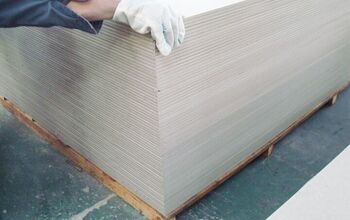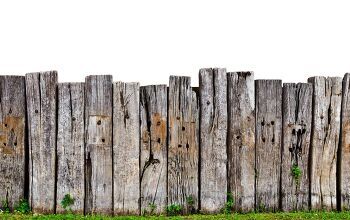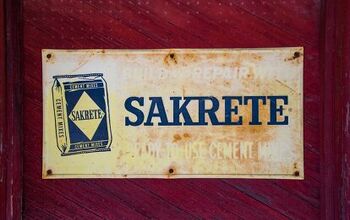Durock Vs. Hardiebacker: Which Cement Board Is Better?

Durock and Hardiebacker are two manufacturers of cement-based backer boards. Generally, it comes down to contractor preference as to which kind of product they will go with on a job. They tend to go with what they know, which can create a product bias. So, when it comes to Durock vs Hardiebacker, which one is the best?
Durock is great for indoor and outdoor use but challenging to cut and install. It contains glass mesh, making it heavy, and it can be too abrasive for porcelain, enamel, and vinyl. Hardiebacker is much lighter and easier to cut because of the EZ grid design and is great for countertops and tiles. However, you can only use Hardibecaker indoors.
Stick with us, and we’ll explain what product is best used for which type of project. That will allow you to choose which one is best for you and for what projects to use them on.
Do You Need to Hire Shower Installers?
Get free, zero-commitment quotes from pro contractors near you.

When Do You Need To Use Cement Board?
Cement board uses a combination of reinforcing fibers and cement to add strength and impact resistance to a wall surface. Sometimes gypsum boards are used because they are water-resistant, but most cement boards are waterproof and best for high-moisture applications.
Cement boards are generally in the 3×5 range, coming in sheet form and usually between one-quarter and one-half-inch thick, used for tile backing. The quarter-inch backer board is best for floor applications since you don’t want it to get too thick.
However, the half-inch is a better option for walls. You could use it on the exterior of buildings to act as a base for stucco systems or even as the finishing system.
Cement boards are usually made out of inorganic materials like water, cement, limestone flour, silica, fiberglass, and Kevlar. Depending on what type of cement board you use, the materials involved may be different.
Why Choose Cement Board Over Wood?
The main reason to use cement boards in place of something like plywood is that they do not have organic materials in them. Organic materials, often found in wood, promote decomposition and rotting. This can mean a need to replace it sooner rather than later.
Since cement board is porous, it can adhere to mortar and grout much better than a wood-based option. It can also be screwed or nailed into almost anything, including concrete, brick, and cinderblock, and it can cut pretty easily by using a power saw, or a hand saw.
The Main Differences Between Durock vs Hardiebacker
While there are some clear differences between the two brands, there is one major difference to be aware of. Hardiebacker has only been approved for indoor use. It should, under no circumstances, be used for outdoor purposes.
Durock, meanwhile, has been approved for both external and internal situations, making it a more versatile option for cement boards and reinforcing. Keep this in mind because it could wind up costing your project quite a bit of money if Hardiebacker boards were purchased with the intent of using them for exterior applications.
Durock Qualifications
Used as a reliable cement product, Durock contains glass mesh. It is also the heavier of the two, and that means that it can be tough to maneuver and use without multiple people handling it at once.
The difficulties in installing and handling it can also mean that it will be a messier installation, resulting in more cleanup time. During the smoothing and cutting, there will need to be particulate cleanup to prevent excess mess.
Because of the abrasive quality, Durock should not be used for things like vinyl, enamel, and porcelain.
Hardibacker Qualifications
Hardibacker is the much lighter of the two, making it a more popular option. It is so popular that it is one of the best-selling cement board brands available on the market today.
In addition to being much lighter, it also is cleaner because it doesn’t have the glass mesh in it. This means a smoother overall job with less time spent on cleanup.
Hardibacker boards also have what is known as the EZ Grid pattern. This allows for more precise, accurate lines to be cut.
No more uneven lines or jagged cuts that can look unsightly. Hardibacker is also very flexible and provides great strength given the light weight of the product.
The Flexibility Of Hardiebacker
Given that Hardiebacker is far more flexible and lighter than its competitors, it can result in a more efficient installation. Best of all, it won’t sacrifice the integrity of the backing, making for a more efficient job on the whole. The easy cleanup can also save on time, which results in saved labor costs.
Hardibacker also tends to be the choice for contractors using tile and countertops. Durock can be far too abrasive and actually do damage to the porcelain, vinyl, and enamel in the process.
The Downsides Of Using Hardiebacker vs Durock
There is one major downside to using Hardiebacker, and that is when it is used on areas that can become consistently exposed to moisture. The mixture of fiber and cement means that it is not quite “waterproof,” even though the packaging suggests that it is. It’s important to recognize that water-resistant and waterproof are two very different things.
Despite the fact that it is not fully waterproof, it is mold-resistant. This means that Hardiebacker can be used to underlay tubs and showers. Make sure that you apply a waterproof sealant over the top of the Hardiebacker while installing. You need to do this to make it truly waterproof and to ensure a proper measure of sanitation.
What Is The Difference Between Drywall And Cement Board?
Drywall has organic materials in it that can impact sturdiness but also become susceptible to moisture and damage. With consistent exposure to moisture, drywall can become rotted and need to be replaced sooner rather than later. Rotted drywall can also lead to a buildup of mold and mildew, which is what leads to dirty tiles.
Meanwhile, the cement board comes in panels that are similar to that of drywall, but that is where the similarities will end. It is meant to provide a much sturdier and stronger base where the stone and tile can be installed.
Moisture And Humidity
Cement board does a better job of resisting potential moisture in the area, which is why most contractors prefer it over drywall. Not only that, but it is also a great choice for installations in areas of high humidity where moisture can become more prevalent.
There is also a greater versatility in cement board as it can be used as an underlayment for walls, flooring, and countertops, whereas drywall cannot. Cement board is not only sturdier, but it is also far more versatile and a common choice for contractors.
Can You Install Cement Board Over Drywall?
If the screws you use are long enough, you can install a backer board over the existing drywall. However, the screws must penetrate deep enough to catch the studs behind the drywall. The ideal scenario is to remove the drywall before installing the cement board.
Durock vs Hardiebacker: What’s Best For Shower Installation?
Hardiebacker can certainly be used for showers since it is resistant to mold. Still, it will require some kind of waterproof sealant to be installed to ensure that everything is sanitary and proper.
Though it is heavier to use, Durock is likely the better bet for showers and tubs. This is because it is waterproof and can stand up to consistent moisture. The only difficulty comes in the fact that Durock isn’t very flexible.
Another Cement Board Option: Wonderboard
There is a third option available for cement boards, and that is Wonderboard. Wonderboard is used for tiling areas that generally have a lot of moisture. This is why Wonderboard is so common in bathroom installations.
Wonderboard is used specifically for tub and shower tiles but will also be found in floors, decks, and even pools. Wonderboard is great for locations with a lot of moisture. It is the only material that won’t fail when the water finally penetrates the tiling.
Cement board, in general, is good to be used in situations where it will be constantly submerged in water. It won’t rot, grow mold, deteriorate, or warp when exposed to water or moisture.
This is why it’s such a good product to use as a backer board. And Wonderboard is possibly the best choice of cement board available for these situations. But, in most cases, any one of them will work, and it really comes down to a matter of personal preference.
VIDEO: Durock vs Hardiebacker vs Wonderboard
Do You Need to Hire Shower Installers?
Get free, zero-commitment quotes from pro contractors near you.

Our Takeaway on Durock vs Hardiebacker
Between Durock and Hardiebacker, the choice of the best product depends on the job that you are trying to do. If you want to install a shower, Durock is better as it’s durable and can stand up better to moisture. However, if you need a more flexible product, then Hardiebacker is what you want to choose.
If working with tile and countertops, Hardibeacker is the better option, and it’s lighter and easier to install. Durock gets abusive and can damage porcelain, enamel, and vinyl. Overall, know the exact demands of the project you’re working on to decide which is best for you when it comes to Durock vs. Hardiebacker.

Ryan Womeldorf has more than a decade of experience writing. He loves to blog about construction, plumbing, and other home topics. Ryan also loves hockey and a lifelong Buffalo sports fan.
More by Ryan Womeldorf



























